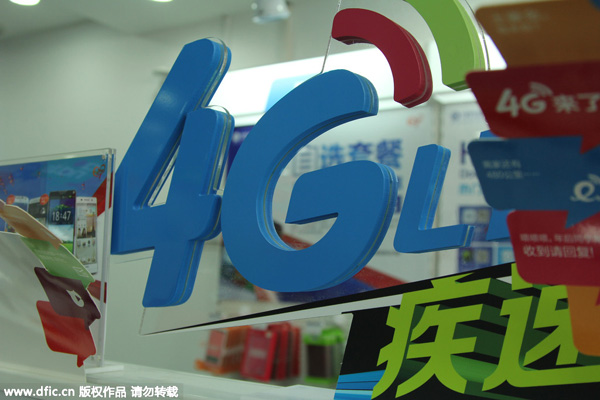Telecommunications giants have to adapt to changing market trends
(China Daily) Updated: 2016-03-29 07:32
 |
|
A signboard of 4G is seen at a branch of China Mobile in Shanghai, Dec 28, 2013. [Photo/IC] |
THE THREE STATE-RUN TELECOMMUNICATIONS ENTERPRISES that have a monopoly of the industry have published their 2015 financial reports, which show they made a profit of 380 million yuan ($58 million) per day. An article on gmw.cn commented:
The profit looks significant, but a deeper look into the reports reveals some problems. China Mobile and China Unicom have seen their profits decline compared with 2014, while China Telecom, the only one that saw an increase in its profits, derived them mainly from its broadband services.
Traditional services such as phone calls and text messages are declining, while data services are replacing them as the biggest part of the cake. When WeChat, the most popular domestic online instant messaging app, emerged, all three giants condemned it for challenging their texting services. They would never have expected that data services would become their main source of profits today.
The rise of WeChat teaches the three telecommunication enterprises the simple lesson that there is no absolute monopoly in the market and unexpected challenges will emerge. They need to adapt themselves to the changing market or they will fail.
In order to better suit the market, they must provide good, satisfying services to their customers. Since last October, the three enterprises have allowed users to carry over any unused part of their monthly data package to the next month, but people's new complaints about being overcharged for data services have been simply ignored.
This is a rather silly attitude. There will always be new technologies emerging in unexpected corners that will lure their customers away.
It is time the three telecommunication giants gave up the old thinking and learned to truly win the hearts of consumers.
- Huawei joins hands with African telecommunication union to boost ICT
- Datang Telecommunication releases new products
- Wuxi-based ChinaC in deal with HK telecommunication provider
- The challenges of the WTO accession to the operation and regulation of telecommunication sector in China and the counter-measures

I’ve lived in China for quite a considerable time including my graduate school years, travelled and worked in a few cities and still choose my destination taking into consideration the density of smog or PM2.5 particulate matter in the region.










